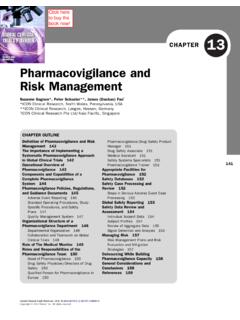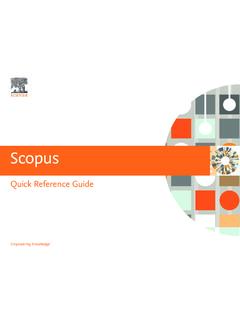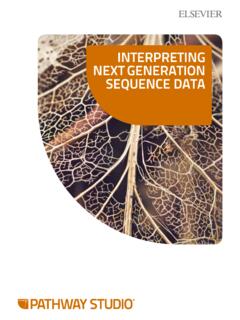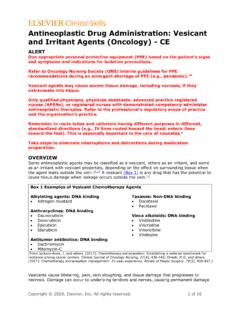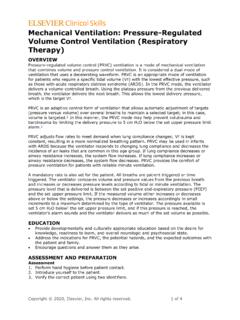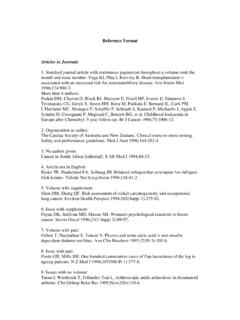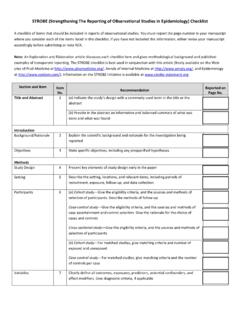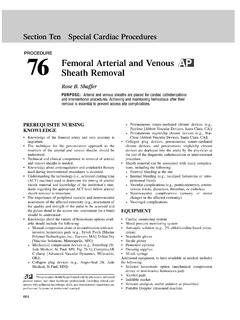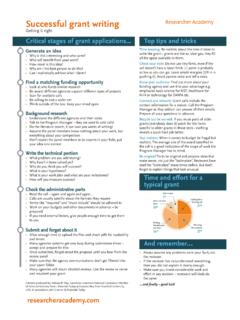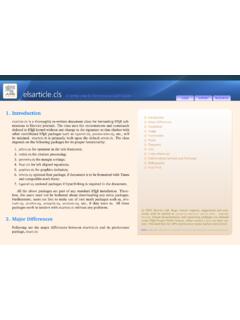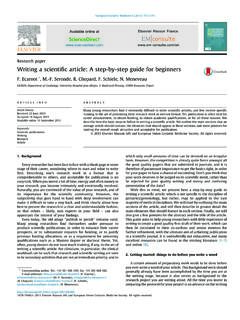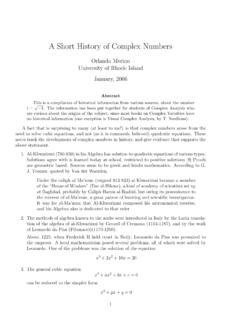Transcription of UNDERSTANDING THE PUBLISHING PROCESS How to …
1 THE PUBLISHING PROCESS How to publish in scholarly journalsSave time organizing and writing papersDownload Mendeley for 307/04/2017 15:29 UNDERSTANDING THE PUBLISHING PROCESS | HOW TO publish IN SCHOLARLY JOURNALS 3 UNDERSTANDING THE PUBLISHING PROCESSHow to publish in scholarly journals CONTENTS1 Introduction .. 42 Find the right journal .. Introduction .. Journal Finder .. Journal metrics .. Open access options .. 63 Prepare your paper .. Your manuscript .. Language quality .. Illustrations .. Enrich your article .. 10 AudioSlides .. 10 Graphical Abstracts .. Adding data .. Ethics.
2 SEO your article .. 114 Submit and revise your paper .. How to submit a paper? .. Peer review .. Article Transfer Service .. Check the status of your paper .. 125 After acceptance .. 13 Article in press .. Proofing .. Share Link & offprints .. 136 Copyright .. 147 Promote your work .. Share your paper .. Be discovered online .. Conferences .. Social media .. Scholarly collaboration networks .. Media relations .. 168 Montor your impact .. Introduction .. Mendeley Stats .. Article metrics .. 189 Why publish with Elsevier .. Introduction .. Innovation .. ScienceDirect .. Scopus.
3 Mendeley .. 2010 Further information and training .. PUBLISHING Campus .. Authors Update .. Postdoc Free Access Program .. 21 UNDERSTANDING THE PUBLISHING PROCESS | HOW TO publish IN SCHOLARLY JOURNALS 4 UNDERSTANDING THE PUBLISHING PROCESS How to publish in scholarly journals Introduction | 1 As researchers, you make huge strides in advancing essential knowledge. Your achievements can save lives and improve the way we live. If you re ready to share your knowledge with the world, this booklet outlines the best opportunities for PUBLISHING your research and for seeing it shared first question to ask yourself is, do I have a story to tell?
4 Editors and reviewers look for original and innovative research that adds to their field of study, or immediately impacts patient care. This means that your conclusions must be sound and based on sufficiently robust data. Secondly, ask yourself, is there an audience for my research findings? .The more original and innovative your research, the more people will be interested. Consider whether your research is of interest to a local, regional or international audience. Identifying your audience is a major factor in selecting the right journal to submit your manuscript to. You can read more about selecting a journal in section are several types of research articles:1.
5 Letters and rapid or short communications are intended for the quick and early communication of significant or original advances, without including too much data or Review papers summarize recent developments on a specific topic, without introducing new Full articles contain significant data, detail, developments and Research elements enable you to publish research output, such as data, software, methods, videos and much more, in brief, citable articles. If you re unsure which type of article to write , discuss your options with your supervisor or colleagues. For the purposes of this booklet, we offer guidance for writing and PUBLISHING a full article.
6 Once you ve decided to write a full article, follow the guidelines of your chosen journal, and the general guidelines for scientific writing outlined in the following THE PUBLISHING PROCESS How to publish in scholarly journalsUNDERSTANDING THE PUBLISHING PROCESS | HOW TO publish IN SCHOLARLY JOURNALS 5 Find the right journal | INTRODUCTION Finding the right journal for your article can be key to reaching your target audience. Take into consideration the type of article you d like to publish (full length, letter, review, research output). Check the references in your article, to give an indication of possible journals of interest.
7 Read the journal s aims and scope on the journal homepage on Read or download the journal s Guide for Authors. Check if the journal is invitation-only; some journals only accept articles after inviting the author to submit. Check the journal s performance for review and publication timelines (see ). If you need to publish open access, remember that most Elsevier journals explain their open access options on the journal homepage (see ). Submit your paper to only one journal at a time (see , on ethics). JOURNAL FINDER The Journal Finder tool locates Elsevier journals that most closely match your abstracts. An Elsevier journal will be recommended if it has published articles that are highly similar to your article.
8 A list of relevant articles is generated, and the tool can filter on your preferred criteria, such as open access options, journal metrics, review time, acceptance rate and production time. See JOURNAL METRICS Journal metrics are at your disposal to help you select the most appropriate journal for your article. When used alongside information about the journal s scope, editorial board, international outlook and audience, they can help you to find the best destination for your types of journal metricsIt s good practice to look at more than one metric to help you make your decision. You ll find a dedicated Journal Insights section on many of the journal homepages on , giving information about the journal s: Speed review speed and online publication time Reach geographic location of corresponding authors and journal usage Impact impact metrics based on citations received by articles Citation-based impact metricsThe average impact of all the articles in a journal is often used as a proxy for the impact of a specific article especially when the article hasn t yet had time to accumulate its own citations.
9 It s important to take this kind of proxy metric into THE PUBLISHING PROCESS | HOW TO publish IN SCHOLARLY JOURNALS 6 The Journal Insights section on the journal homepage has several impact metrics to be aware OPEN ACCESS OPTIONSIn general, open access indicates free and permanent access to published research, combined with clear guidelines for readers to share and use the content. There are two main types of open access: gold and is the difference between gold and green? Some funding bodies or institutions have a policy on public access to research. It s important to know the open access policy of your institution or funding body before you decide whether or not to publish open access.
10 Elsevier offers a wide range of publication options for your research to comply with funding policy or institutional mandates. Elsevier publishes more than 400+ gold open access journals and offers options to publish open access in more than 1,600 subscription journals. For more information on your open access options, see *SNIPSJRI mpact FactorFull nameCiteScoreSource-Normalized Impact per PaperSCImago Journal Rank MeasuresAverage number of citations received in a calendar year by all items published in that journal in the preceding three years. Citations relative to average for discipline; SNIP > 1 means journal is cited more than average for fieldAverage prestige per publication, depending on the SJR of the citing journalAverage citations per publicationAccounts for varying journal size?
